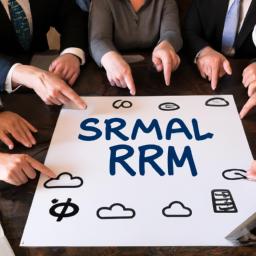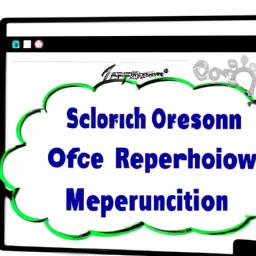Factors Influencing Microsoft Dynamics CRM Pricing
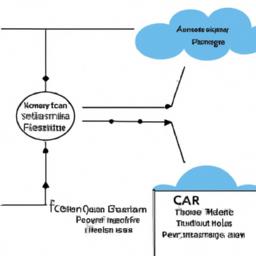
microsoft dynamics crm pricing is influenced by several key factors that determine the cost structure and options available to users. Understanding these factors is crucial to make an informed decision about which pricing plan suits your organization’s needs. Let’s delve into the main considerations that affect Microsoft Dynamics CRM pricing.
A. Editions and Licensing Options
Microsoft Dynamics CRM offers different editions, each tailored to specific business requirements. These editions include Online, On-Premises, and Hybrid options. Comparing these editions allows you to determine the most suitable one for your organization. Additionally, Microsoft Dynamics CRM provides various licensing models such as user-based, device-based, and server-based licensing. Each model has its own pricing structure and considerations, which should be taken into account when evaluating the overall cost.
B. User and Storage Limits
Microsoft Dynamics CRM pricing is often tiered based on the number of users. Different pricing tiers accommodate various user counts, allowing organizations to choose the most cost-effective option based on their team size. Additionally, storage allocation and costs are factors to consider. Depending on the chosen plan, there may be limitations on the amount of data you can store, and exceeding these limits may incur additional charges.
C. Additional Features and Modules
Microsoft Dynamics CRM offers a range of additional features and modules that enhance its functionality. These include third-party integrations, customer service and marketing modules, and advanced analytics and reporting tools. While these features provide valuable capabilities, they may also impact the overall pricing. Evaluating the necessity and cost-effectiveness of these additional modules is essential to ensure you are selecting the right pricing plan for your organization’s requirements.
By considering these factors, you can gain a better understanding of how Microsoft Dynamics CRM pricing is determined. This knowledge will enable you to make an informed decision when selecting a pricing plan that aligns with your organization’s needs and budget. In the next section, we will explore the different pricing models available for Microsoft Dynamics CRM.
Microsoft Dynamics CRM Pricing Models
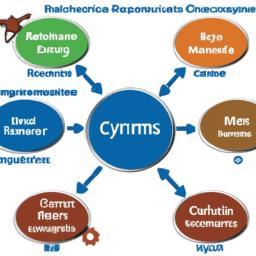
When it comes to Microsoft Dynamics CRM pricing, there are different models to consider. Understanding these pricing models is crucial for making an informed decision that aligns with your organization’s needs and budget. Let’s delve into two primary pricing models offered by Microsoft Dynamics CRM: subscription-based pricing and perpetual licensing.
A. Subscription-based Pricing
Under the subscription-based pricing model, you have the flexibility to choose between monthly or annual subscription plans. This allows you to pay for the CRM software on a recurring basis, rather than making a significant upfront investment. Microsoft Dynamics CRM offers various pricing tiers based on the number of users, enabling you to select the plan that best suits your organization’s size and requirements.
-
Monthly or annual subscription plans: With this model, you can opt for a monthly subscription that offers greater flexibility or an annual subscription that may provide cost savings in the long run. Consider your organization’s financial situation and CRM usage patterns to determine which option is more suitable for you.
-
Pricing tiers based on user count: Microsoft Dynamics CRM pricing tiers are often structured based on the number of users. This allows you to choose a plan that accommodates your organization’s size and growth. You can start with a lower tier and easily upgrade as your business expands, ensuring you only pay for what you need.
B. Perpetual Licensing
Alternatively, Microsoft Dynamics CRM also offers a perpetual licensing option. With this model, you make a one-time purchase of the CRM software and then pay ongoing maintenance fees. This allows you to have perpetual access to the software, along with regular updates and support. Additionally, you have the choice to purchase add-ons and upgrades to enhance your CRM capabilities.
-
One-time purchase with ongoing maintenance fees: By selecting the perpetual licensing option, you invest in the Microsoft Dynamics CRM software upfront. You then pay maintenance fees to receive updates, patches, and technical support. This model is suitable for organizations that prefer a long-term investment approach and want to have complete control over their CRM solution.
-
Options for add-ons and upgrades: With perpetual licensing, you have the flexibility to purchase add-ons and upgrades to further enhance your CRM system. This allows you to tailor the solution to your specific needs and keep up with evolving business requirements.
Understanding the different pricing models provided by Microsoft Dynamics CRM empowers you to choose the most appropriate option for your organization. Consider factors such as budget, scalability, and long-term goals to make an informed decision that aligns with your CRM strategy. Now that we have explored the pricing models, let’s move on to understanding the pricing structure and associated costs in Section 4.
Understanding Microsoft Dynamics CRM Pricing Structure
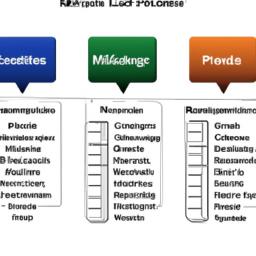
When considering Microsoft Dynamics CRM for your organization, it is crucial to understand the pricing structure to make informed decisions. The pricing of Microsoft Dynamics CRM consists of two main components: initial setup and implementation costs, and ongoing operational costs.
A. Initial Setup and Implementation Costs
To get started with Microsoft Dynamics CRM, you will incur certain expenses related to the initial setup and implementation. These costs are essential for tailoring the CRM system to your organization’s specific needs and requirements. Here are the two main factors to consider:
-
Professional Services Fees:
Implementing Microsoft Dynamics CRM often requires the expertise of professional services consultants. These consultants will guide you through the implementation process, assist with data migration, and provide training to ensure a smooth transition. The fees for professional services can vary based on the complexity of your implementation and the level of customization required. -
Customization and Configuration Charges:
Microsoft Dynamics CRM offers a high degree of flexibility and customization options to align with your unique business processes. However, customization and configuration charges may apply if you require extensive modifications beyond the out-of-the-box functionality. These charges can include customizing workflows, creating custom entities, or integrating with other systems.
B. Ongoing Operational Costs
After the initial setup, there are ongoing operational costs associated with Microsoft Dynamics CRM. These costs are necessary for the system’s maintenance, support, and ensuring user adoption. Consider the following aspects:
-
Support and Maintenance Fees:
Microsoft provides support and maintenance services for their CRM platform, which typically involves regular updates, bug fixes, and security patches. These fees ensure that your CRM system remains up to date and continues to function smoothly. -
Training and User Adoption Expenses:
To maximize the benefits of Microsoft Dynamics CRM, it is essential to invest in proper training for your employees. Training programs can help users understand the system’s functionalities and encourage its adoption within your organization. While these expenses may vary based on the number of users and your training requirements, they are crucial for driving user engagement and productivity.
Understanding the pricing structure of Microsoft Dynamics CRM is vital for budgeting and making informed decisions. By considering the initial setup and implementation costs, as well as the ongoing operational costs, you can ensure that your investment in Microsoft Dynamics CRM aligns with your organization’s goals and objectives.
Tips for Choosing the Right Microsoft Dynamics CRM Pricing Plan
When it comes to selecting the right Microsoft Dynamics CRM pricing plan for your business, there are several factors to consider. Here are some helpful tips to guide you through the decision-making process:
A. Assessing your organization’s needs and budget
Before diving into the various pricing plans, it’s crucial to evaluate your organization’s specific requirements and budgetary constraints. Consider the size of your business, the number of users who will access the CRM system, and the specific features and functionalities you require. This assessment will help you narrow down the pricing options that align with your needs.
B. Evaluating scalability and future growth potential
As your business grows, so will your CRM needs. It’s important to choose a pricing plan that offers scalability and flexibility to accommodate your future expansion. Look for plans that allow you to easily add or remove users, increase storage capacity, and integrate additional modules as your business demands evolve.
C. Requesting quotes and negotiating pricing options
Once you have a clear understanding of your organization’s requirements and growth potential, reach out to Microsoft Dynamics CRM providers to request personalized quotes. Don’t be afraid to negotiate pricing options based on your specific needs and budget. Providers may offer discounts or customized packages that better suit your business requirements.
Remember, choosing the right pricing plan is essential to maximize the value and benefits of Microsoft Dynamics CRM for your business. By carefully assessing your needs, evaluating scalability, and exploring pricing options, you can make an informed decision that aligns with your budget and sets your business up for success.
In conclusion, understanding Microsoft Dynamics CRM pricing is crucial for businesses looking to leverage this powerful tool. By exploring the various factors influencing pricing, comparing it with competitors, and following the tips outlined in this article, you can make an informed decision that suits your organization’s needs. Take the time to assess your requirements, evaluate scalability, and negotiate pricing options. With the right pricing plan, you can unlock the full potential of Microsoft Dynamics CRM to drive growth and enhance customer relationships.
Bolded brand name: y8y8y8.top

